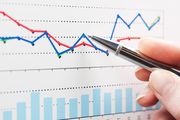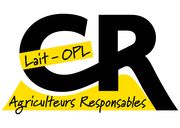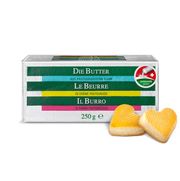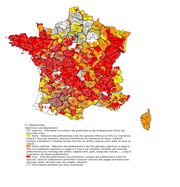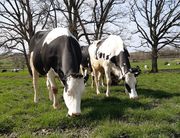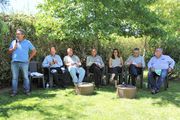EMB Newsletter September/October 2022
Newsletter as PDF
Contact
EMB - European Milk Board asbl
Rue de la Loi 155
B-1040 Bruxelles
Phone: +32 - 2808 - 1935
Fax: +32 - 2808 - 8265
Dear dairy farmers, dear interested parties,
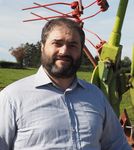
Farm work is not “just” farm work. It is called the primary sector for a reason because without it, other economic activities would not be possible. Without farmers, there are no farms, and without farms, there is no food. Politicians seem to have forgotten where their meals come from. They have come to take for granted stocked supermarket shelves and grocery carts filled with affordable, quality food. When farmers give up because they are unable to make a decent living, knowhow is lost. Once set in motion, this process is difficult, if not impossible to turn around.
Let's have a look at what we in the European Union can do about this.
Farmers must remain involved in politics
A gloomy autumn season is forecast for all members of society, but for dairy farmers in particular, which is exacerbated by the fact that we have already used up a considerable amount of our energy and financial reserves in recent years due to severe, consecutive crises. In addition to working on our farms, we have also positioned ourselves politically and rolled up our sleeves to seek to establish a stable market. It goes without saying that this political work still is and will remain essential. It is therefore vital that we as farmers maintain our strong involvement in the political arena.
Demonstrations and campaigns are part and parcel of this work. An effective way for farmers to fight for their survival is to organise, organise, organise. This is easier said than done given that dairy farming is very demanding and does not afford us much spare time for other activities. Our voices can only ring out loud if we stand together to fight for an agricultural sector that is socially, economically, and environmentally sustainable, including for producers.
A core political task of the EMB is to ensure that production costs are passed on to those purchasing the milk. The EMB is equally active in trying to anchor social sustainability in the European Common Agricultural Policy and the Green Deal, while advocating for our Market Responsibility Programme to be included in the EU crisis toolbox. Last July, farmers from the two important transnational producer organisations EMB and ECVC sent a joint open letter to the EU institutions and national ministries to call for stable farmer incomes as they are the sine qua non for food security in the EU.
More farmers should make use of producer organisations’ support for negotiations
Producer organisations have continued to develop but producers are still not negotiating on an equal footing with dairy processors and supermarket chains. This begs the question: what can we – what can each and every one of us - do to increase our market power? For producers to get the upper hand, more of us need to join organisations that actively negotiate the conditions of milk deliveries for many farmers. These organisations must have a horizontal structure, i.e. they need to negotiate with several processors instead of putting all their eggs in one basket.
When it comes to policy makers, they can help improve the legislative framework for producer organisations, such as allowing them to draw up and negotiate contracts for milk delivered to cooperatives.
Support the Fair Milk project
Meanwhile, the Fair Milk initiative pays fair prices to participating producers, serving as a model for the wider dairy market. This is a very positive project sending out strong signals already in France, Belgium, Germany, Luxemburg, Switzerland and also on the African continent. Consumers and farmers massively support this project which bears realistic optimism. Farmers can further enhance this impact by building up support for this key project.
Politicians should ensure agricultural products are not sold below production costs
For milk markets to be stable, they need to be fair. In other words, farmers should be paid a price for their production that not only covers their running costs, but that also provides sufficient income. More specifically, if we want to have and maintain a healthy relationship between dairy farmers and processors, the law should prohibit the sale of milk at a price below its production cost. It goes without saying that this should apply to milk delivered to cooperatives and to private enterprises alike.
By reading the contributions of our members to our newsletters, you will see that current prices are still lagging behind production costs, with the gap increasing day by day. For instance, the APROLEP article shows that costs for our Portuguese colleagues have increased by 51% since the start of 2022, yet the industry has only raised the milk price by a mere 35%. Instead of getting smaller, the gap between costs and prices is widening. As our French colleagues point out in their article, the situation is similar in France, with prices at an estimated 445.50 euros per ton, which is far below the cost of production.
Policy makers should exclude agriculture from free-trade agreements and include mirror clauses
The EU is still eager to conclude free-trade agreements, such as the most recent one with New Zealand. As a result, New Zealand will export, among other things, more butter, milk powder, cheese and beef to the EU. However, it is the position of the EMB that agriculture be taken out of such free-trade agreements. The sector is simply too important from a strategic point of view.
As a general principle, agricultural products imported into the EU should be subject to the same conditions and regulations as EU products (mirror clauses). In other words, imported agricultural goods should be of the same quality and produced under the same social and ecological standards European producers have to adhere to.
Let us together send policy-makers a strong reminder about where their meals come from, and that assuming farmers will keep on feeding them in such circumstances is not a given. Let’s continue to jog their memory that the problematic course the EU finds itself on must be altered. It is all the more essential that we farmers continue to actively participate at all levels. It is not just the livelihoods of individual farmers and milk producers that are at stake, but food production and food security itself.
Roberto Cavaliere, member of the EMB Executive Committee and President of the Associazione Produttori di Latte Pianura Padana (APL)
ICMSA say ‘near total’ suspicion that Irish government policy is ‘managed decline’ of commercial farming
Drought 2022 - livestock farming in danger
The interplay between climate change and pasture grazing
National meeting of Portuguese milk producers
Impressum
European Milk Board asbl
Rue de la Loi 155
B-1040 Bruxelles
Phone: +32 2808 1935
Fax: +32 2808 8265
E-Mail: office@europeanmilkboard.org
Website: http://www.europeanmilkboard.org

